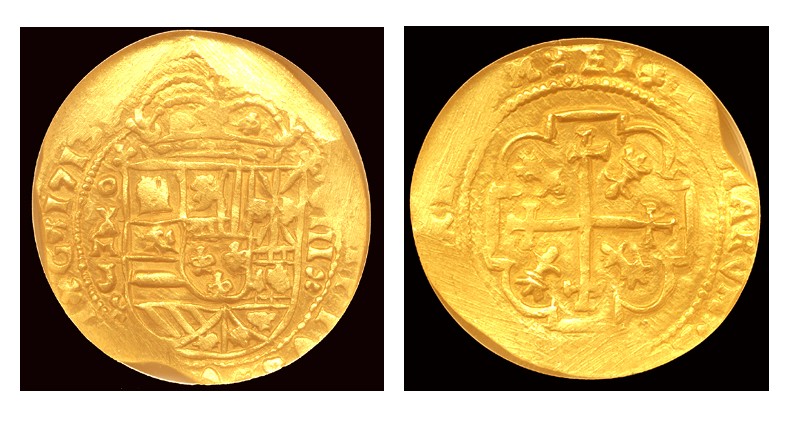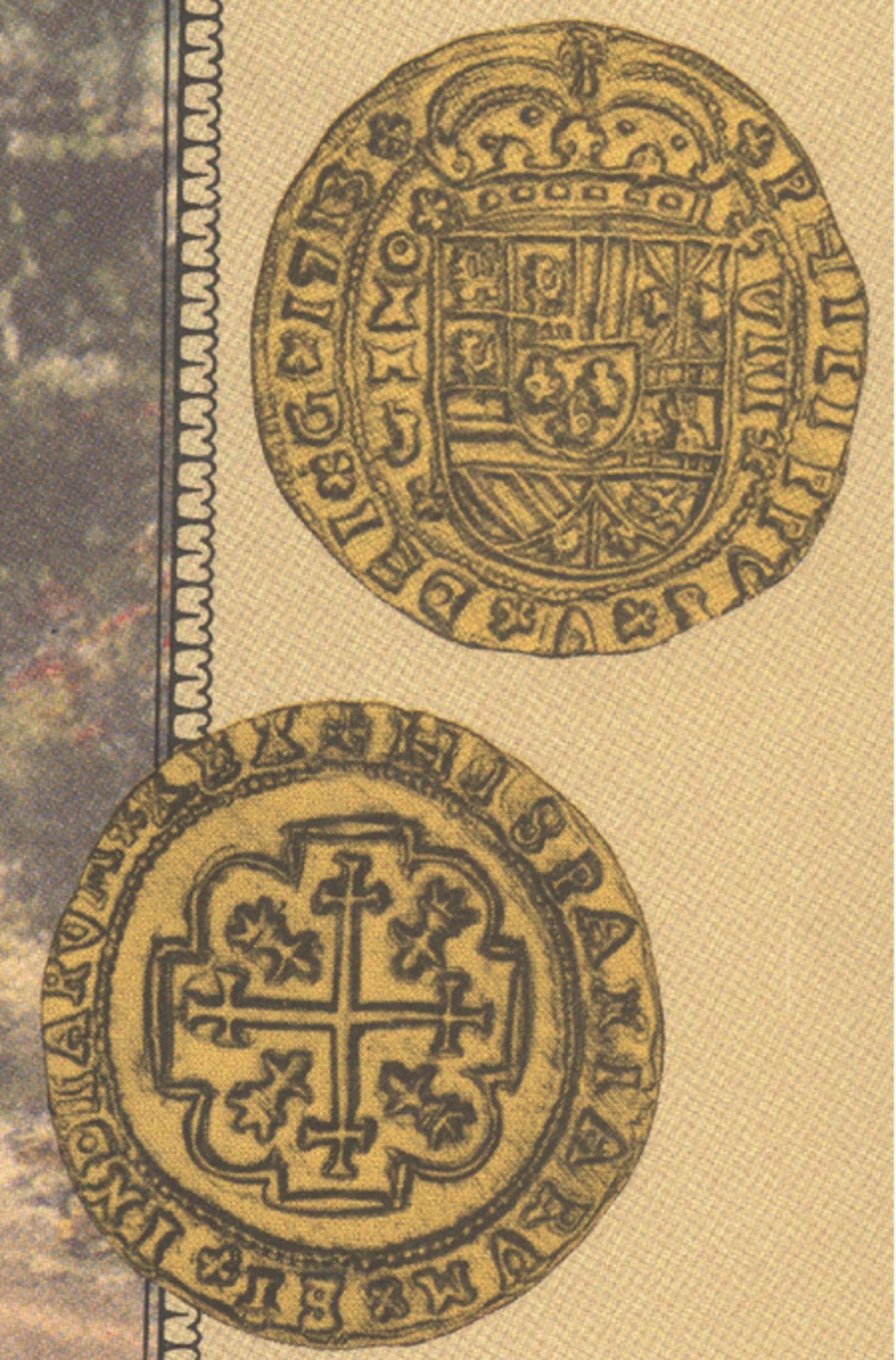Our Treasure of the Month for October is this exceptional Mexico 1713 MXo J eight escudos, struck on a huge (36mm) round planchet from a Royal die. Those who are students of Fleet related gold coinage are familiar with the poor quality of coins produced in 1713 at the Spanish colonial mint in Mexico City. These coins have a reputation of being poorly struck with dies that, to be kind, often resemble “chicken scratch”. So, when an exceptional coin of this date comes around it is worth writing about. Our Treasure of the Month is just such a coin. Phil Flemming, who is a Fleet Society Director and our Academic Coordinator, had the rare opportunity to study this piece a few years ago and afterward wrote the following commentary:
For reasons we don’t yet understand, 1713 represented the absolute bottom of the barrel for the quality of coin engraving and striking at Mexico City under Philip V (1700-1747). No effort was made to produce round, Lima-style planchets or center-strike the planchets. More than 95% of 1713 Mexican 8 escudos are just plain ugly: they are struck badly off-center on very irregular, misshapen planchets. When we encounter a rounded, very large planchet, where an effort was plainly made at centering—I have seen just TWO 1713 in 30 years of which this could be said—then we know this was not a routine striking at the Mexican mint.
Hand-engraved dies of remarkably crude quality were prepared for a 1713 Royal 8 escudos. Calico pictures one of the two surviving 1713 Royal at #391 in his magnificent catalogue, LA ONZA(2004). This Royal sold publicly at the 1985 FUN Show for over $28,000 (I was an unhappy underbidder at $25,000). A cover photo from the FUN catalogue is below.
Though I have never seen another 1713 from these dies, it is not surprising that Royal dies would be re-used. But they would not be re-used on a very large, rounded, well-centered coin if this this were just a business strike! Thanks to on-going research by Jorge Proctor and other scholars of the Mexican cob coinage, we now know that a fair number of “near Royals” were produced as Mexican coiners attempted the very uncertain task of producing a full Royal striking. Planchets tended to spread or notch (as here) when struck, and the quality of the strike was completely unpredictable inasmuch as Mexico lacked machine presses in 1713. An attempted Royal that did not produce a perfect “round” (redondo) was faceted as here and presumably released as a business strike. The end product is a beautiful Royal-size 1713 Mexican onza, but one that is not of Royal quality. If you have $300,000 and 20 years to wait, you may have a shot at a 1713 Royal. If not, this is probably the best 1713 you can obtain.

